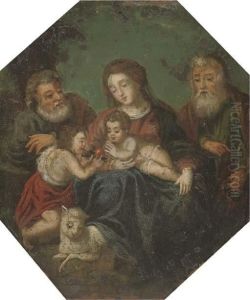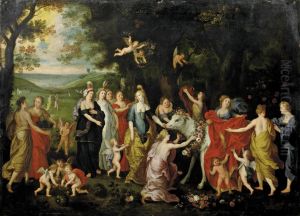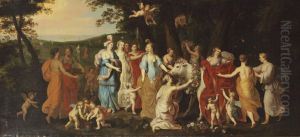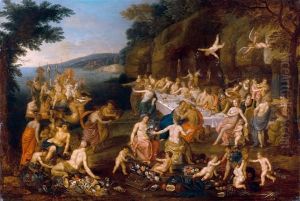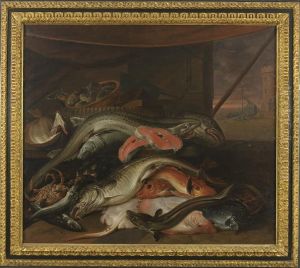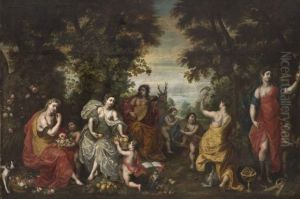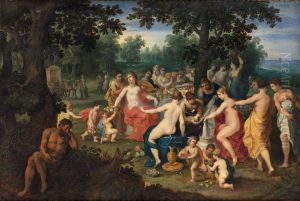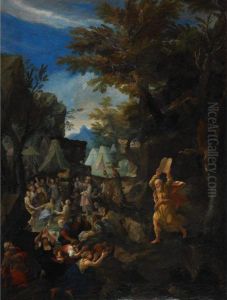Hendrick Balen Paintings
Hendrick van Balen was a Flemish Baroque painter born in Antwerp in 1575. As a key figure in the early 17th century Flemish art scene, he is best known for his detailed and elegant mythological and religious scenes, often rich in allegory and meticulously crafted. Balen was a product of the vibrant Antwerp artistic environment, which was a major center for the arts in Europe during his lifetime. He studied under Adam van Noort, who was also the teacher of Peter Paul Rubens, and this connection placed him in the midst of the development of the Baroque style that would dominate European art.
Balen’s work is characterized by its finesse and the use of color, which he applied in a manner that enhanced the ethereal and divine qualities of his subjects. His compositions are densely populated and meticulously detailed, reflecting the opulence of the Baroque period. He frequently collaborated with other artists, such as Jan Brueghel the Elder and Joos de Momper, which was common in the Antwerp art scene. These collaborations allowed for an incredible fusion of talents, with Balen often contributing figures to landscapes or flower pieces executed by his contemporaries.
Despite his success and influence in his time, Hendrick van Balen’s work was somewhat overshadowed by the later achievements of his more famous contemporaries and students, including Anthony van Dyck and Rubens. However, his contribution to the Flemish Baroque and his role in the development of genre and mythological painting remain significant. Balen was not only a painter but also a teacher, and his studio was influential in the development of many young artists who would go on to become key figures in the Baroque movement.
He died in Antwerp in 1632, leaving behind a rich legacy of artwork that continued to influence the Flemish school. Today, his works can be found in many major museums around the world, offering insight into the sophistication and beauty of early 17th-century Flemish painting. Balen’s ability to blend the divine with the detailed, and the mythological with the moral, makes his work a fascinating study for art historians and lovers of the Baroque era.
